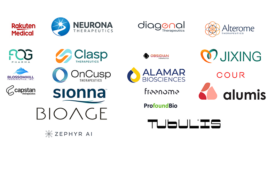
[Image courtesy of Artem Egorov via iStock Photo]
Because many smaller drug developments don’t have the physical assets needed to screen for solid forms, it is common to work with external partners at this stage.
To learn more about screening for solid forms, we interviewed Michael Morgen, R&D director of Bend, Oregon–based Lonza Small Molecules, a subsidiary of Lonza Group AG.
In the following interview, Morgen discusses the solid form landscape and advises selecting the most suitable chemical and physical form of an API. Morgen also explains how the screening and characterization of chemical forms and polymorphs or amorphous forms can facilitate optimal drug formulation.
Please briefly summarize your background in drug development and your role at Lonza.

Michael Morgen
Morgen: I am currently the director of R&D at Lonza Bend. I have 20 years of experience in pharmaceutical development and have led several innovation programs in oral and non-oral drug delivery. My group currently works primarily in the development of formulation enabling platforms and the associated characterization techniques for oral bioavailability enhancement and modified release for small molecule drugs.
Most organic molecules have multiple forms. Can you provide an overview of how that fact impacts the selection of the lead solid form?
Morgen: The well-known chemist Walter McCrone once famously said, “the number of forms known for a given compound is proportional to the time and money spent in research on that compound.”1 Due to the large number of available solid forms, this is still true today since it is typical during pharmaceutical development to take a staged approach to explore the solid form landscape to identify a narrowed set of forms appropriate for development. The selection of a lead solid involves the screening and characterization of both chemical forms and polymorphs of lead chemical forms, and it directly impacts the characteristics of the resulting product, such as manufacturability, stability and bioavailability.
Manufacturability involves important factors such as yield, purity and downstream handling of the active pharmaceutical ingredient (API) during processing into a product. Different solid forms can vary in their tendency for chemical and physical stability both during the manufacture and storage of the drug product. Likewise, the widely varying physicochemical properties of the solid form can have a large impact on the bioperformance of the drug product. As such, the target product profile and molecular structure and properties will determine the need for screening salts, cocrystals or bioavailability-enhancing formulations. The early selection of an appropriate solid form based on manufacturability, stability and bioperformance criteria is important for the effective development of pharmaceutical products. It requires extensive materials and process expertise, as well as robust characterization capabilities.
What are some of the main things drug developers overlook when selecting the suitable chemical and physical form of an API?
Morgen: A common issue is not having clear communication between the drug substance and drug product group – meaning that drug substance groups simply pass a project across the fence to the drug product group for further processing without any real communication. These two groups often operate separately, with little visibility of what the other is doing, especially when a biotech uses different contract development and manufacturing organizations for drug substance and drug product. In fact, there have been some instances where one partner was formulating what the second outsourced partner was isolating from synthesis.
When choosing a solid form, this synergy is critical as you need insights from both teams. With misaligned communication, issues may arise that neither group predicted, which can result in costly and time-consuming solutions.
Can you share more about how Lonza helps screen and characterize chemical forms and associated polymorphs for clients?
Morgen: We strive to quickly and efficiently interrogate the solid form landscape by using various methods to screen a range of kinetically accessible forms. We use several methods for producing different polymorphs, salts, or cocrystals at small scale and then characterize them to determine their developability using a wide array of characterization tools. X-ray powder diffraction (XRPD), nuclear magnetic resonance (NMR) and FTIR spectroscopy, and thermal methods such as thermogravimetric analysis (TGA) and differential scanning calorimetry (DSC) are some of the workhorses.
Once lead forms are identified based on initial manufacturability, stability, and performance metrics, we undertake crystallization process development to assure successful scale-up. For all of this work, we leverage decades of materials science and pharmaceutical development experience to understand and the solid form information to progress our client’s molecules to and through the clinic.
Please briefly describe the role of screening and selection in development for process risk reduction and supporting IP claims.
Morgen: Our offering is designed to meet the early-stage development requirements of small biopharma players, with the goal to advance rapidly, reduce risk or strengthen our partners’ IP claims. Due to accelerated timelines, there is often a need to proceed with a lead form based on the best information at hand while at the same time looking for and characterizing any additional forms that could appear during the manufacture or storage of the drug substance or drug product. Understanding the thermodynamics and the dynamics of conversion can help mitigate the risk of a new polymorphic form appearing during or even after development. Likewise, assessing the solid-state landscape is important to provide clients with IP to protect their innovation. For this reason, we pay significant attention to identifying and characterizing multiple forms.
How does Lonza’s work on lead sold form selection vary according to customer type?
Morgen: At Lonza Solid Form Services, we have the flexibility in scope to adapt to clients’ individual needs for their particular program. While we are a big business, our people work as one with our clients to find the right way to meet their goals.
Ideally, we collaborate closely with the client to understand the target project profile and, in particular, the technical drug formulation and delivery requirements. Based on this joint technical assessment, we can develop the most appropriate solid form. For example, for immediate-release oral delivery applications, we can assess whether sufficient exposure is likely to be obtained with a crystalline polymorph or whether bioavailability needs to be enhanced with a salt or cocrystal, or an amorphous spray-dried dispersion. Performing this step right after the drug substance development step brings many benefits in meeting tight timelines of the overall drug development life cycle. For smaller companies lacking physical assets, meeting these timelines is absolutely critical as it reduces risk in the later stages of development.
References
- (W. C. McCrone, Polymorphism, Physics and Chemistry of the Organic Solid State, Vol 2, pp. 725–767, New York, Wiley Interscience, 1965).
Filed Under: Drug Discovery and Development



